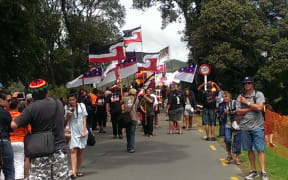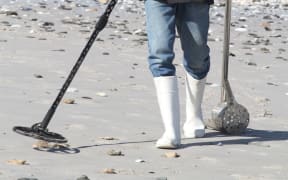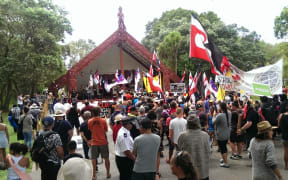Precious taonga steeped in the history of the Treaty of Waitangi have been put on public display at Te Papa for the first time.
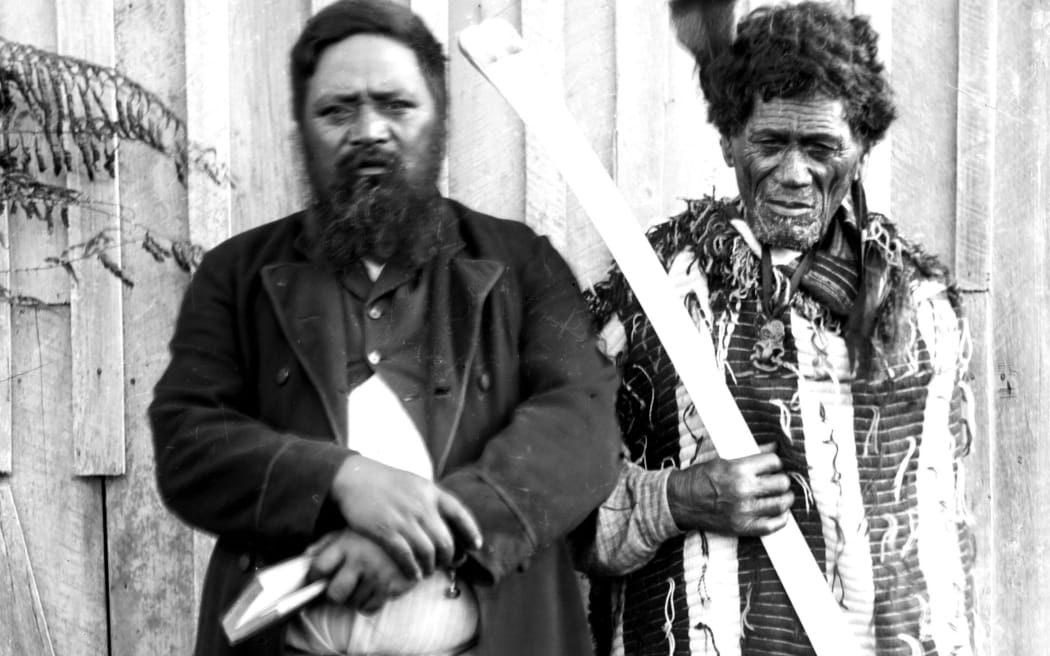
Mohi Tāwhai (right) holding his hoeroa and his son Hone, who went on to become an MP. Photo: AUCKLAND WAR MEMORIAL MUSEUM
The museum said the treasures reflected the changes that arrived with the colonising British and the turmoil that ensued.
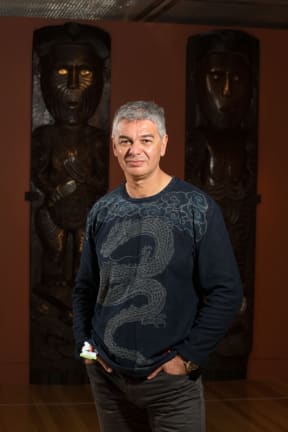
Matiu Baker Photo: TE PAPA
The exhibits - Pūmuka's flag; a taiaha; mere pounamu and a hoeroa - were owned by Māori chiefs involved in the creation of the Treaty of Waitangi.
The hoeroa, a long staff, was owned by Mohi Tāwhai, who signed Te Tiriti in Hokianga on 12 February 1840 and whose son Hone became an MP.
Te Papa's Curator (Māori) Matiu Baker said the weapon accompanied the chief and reflected his great status.
"The hoeroa is about 1.5 metres in height. It's a long slender staff and made from the lower jaw bone of the sperm whale. It's a beautifully elegant taonga and belonged to Mohi Tāwhai and then by descent to his son Hone Tāwhai [who became an MP]."
Mr Baker said Mohi Tāwhai signed the treaty but was sceptical about what lay ahead.
"Despite his misgivings, Mohi Tāwhai gave loyal support to the British Crown, including on the battlefield and felt that there was no other way forward but to sign the treaty."
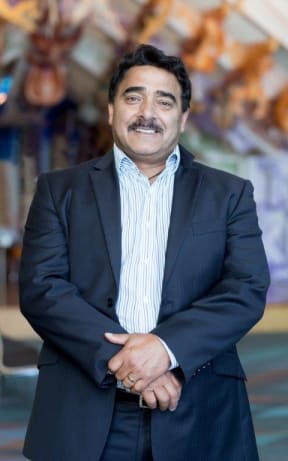
Arapata Hakiwai Photo: TE PAPA
Sally West (nee Tāwhai) is the fifth generation down from the chief. She said seeing the hoeroa for the first time summoned deep emotions.
"I really cried because I've heard a lot about it, I've seen pictures of it. I could feel my tupuna as soon as I came in. Very moving, it's overwhelming, we've always had him in our hearts, in our tupuna whare and in our homes."
Ms West said it was saddening that while her tupuna signed the treaty, so much remains unresolved - and eventually she would like to see the hoeroa returned to its rightful home.
"There's still a lot of pain and there's still a lot of injustices going on now unfortunately. We'd like to have it returned. They can use it for a short time but they [taonga] must return, they're looked after well here."
The Māori leader or Kaihautū at Te Papa, Arapata Hakiwai, said the museum advocated cultural redress and the hoeroa should be returned at some point to its iwi.
Mr Hakiwai believed that while museums were colonial constructs, the taonga reflected efforts to reconcile the nation's history with the Treaty of Waitangi.

